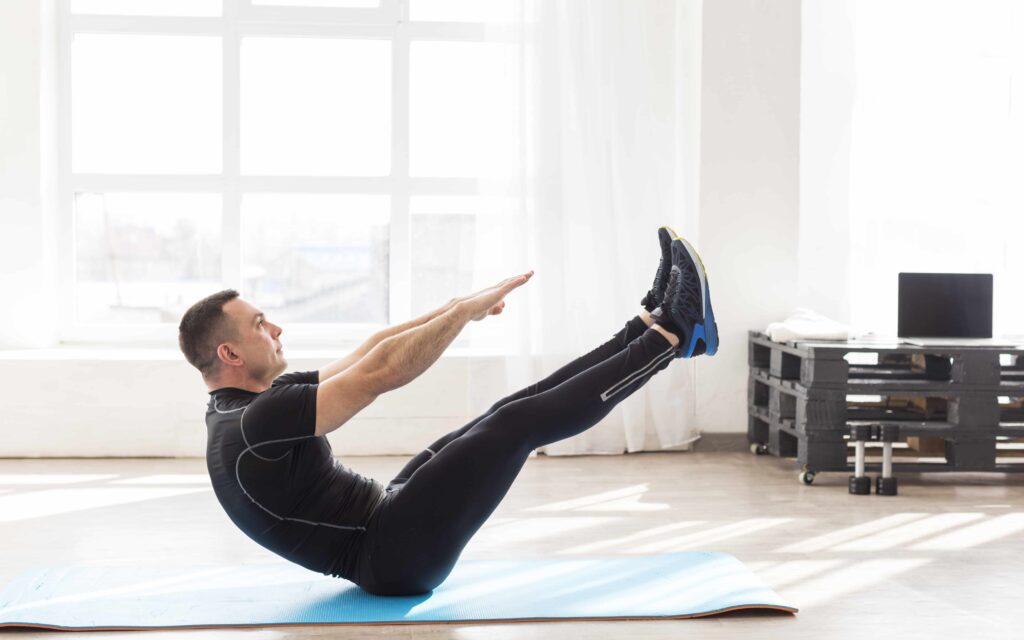Introduction
Choosing the right workout can be overwhelming with so many options available. Two popular bodyweight-based training styles—calisthenics and Pilates—often come up in conversations about strength, flexibility, and functional fitness. But while they might both rely on bodyweight, they serve different purposes and cater to different fitness goals. This article compares calisthenics vs Pilates to help you understand which one is better suited for your needs, lifestyle, and preferences.
What Is Calisthenics?
Calisthenics is a form of strength training that uses your body weight as resistance to build muscle, endurance, and control. Movements include push-ups, pull-ups, squats, dips, planks, and more advanced variations like muscle-ups and handstands. Calisthenics can be done anywhere, making it highly accessible and scalable for beginners and advanced athletes alike.
The primary focus of calisthenics is on functional strength, coordination, and mobility. Over time, it can lead to significant improvements in muscle tone, body control, and overall athleticism. For those looking to gain lean muscle without lifting weights, calisthenics offers a dynamic and progressive path.
What Is Pilates?
Pilates is a low-impact exercise system developed by Joseph Pilates in the early 20th century. It focuses on strengthening the core, improving posture, and enhancing flexibility. Pilates involves controlled, precise movements that engage stabilizing muscles, especially around the spine, hips, and abdomen. While mat Pilates requires no equipment, reformer Pilates uses a spring-loaded machine to increase resistance and control.
Pilates is widely used for rehabilitation, injury prevention, and posture correction. It’s especially popular among dancers, athletes, and people seeking mindful movement and body awareness. According to Johns Hopkins Medicine, Pilates helps with alignment, breathing, and core control—making it a favorite for long-term wellness.
Calisthenics vs Pilates: Key Differences
Let’s compare calisthenics vs Pilates across several key areas:
1. Training Goals
- Calisthenics is designed to build strength, muscular endurance, and body control.
- Pilates emphasizes core stability, flexibility, posture, and mindful movement.
If your goal is to build upper body strength or master skills like push-ups or pull-ups, calisthenics is the better choice. If you’re focused on injury prevention, flexibility, or spinal health, Pilates might be more beneficial.
2. Intensity and Progression
- Calisthenics can become highly intense as you progress into advanced movements like planches or front levers.
- Pilates remains low-impact but increases difficulty through precision, control, and added resistance (especially with reformer machines).
Calisthenics is great for those who enjoy challenges and skill mastery. Pilates appeals to those who prefer controlled, low-impact workouts with long-term health benefits.
3. Equipment Requirements
- Calisthenics requires minimal to no equipment—just a bar or parallel dip station is enough to progress.
- Pilates, especially reformer Pilates, may require access to specialized equipment or a studio.
However, mat Pilates can be done at home with nothing but a mat, making both options convenient.
4. Flexibility and Mobility
- Pilates directly targets flexibility and posture improvement.
- Calisthenics develops mobility indirectly through full-range-of-motion exercises, especially when combined with stretching routines.
If flexibility and spinal health are top priorities, Pilates has the edge. For full-body functional movement, calisthenics wins in overall mobility and control.
5. Core Engagement
Both systems emphasize core strength but in different ways:
- Pilates places core engagement at the center of every movement.
- Calisthenics also builds a strong core through exercises like planks, hanging leg raises, and dynamic balance-based movements.
To strengthen the core and improve aesthetics, both methods are highly effective and can complement each other.
Benefits of Calisthenics
- Builds full-body strength using bodyweight
- Improves control, balance, and agility
- Can be done anywhere, with no gym required
- Scalable for all fitness levels
- Enhances muscle definition and fat loss when paired with proper nutrition
You can check out our article on Progressive Overload Techniques to see how calisthenics can evolve over time for continual strength gains.
Benefits of Pilates
- Improves core strength, posture, and spinal alignment
- Increases flexibility and joint mobility
- Low-impact and gentle on joints
- Enhances body awareness and mental focus
- Excellent for injury rehab and chronic pain management
Want to improve your diet along with Pilates? Our Top 10 Nutritional Tips for a Healthier You pairs well with this low-impact training method.

Which One Is Right for You?
Here’s a quick guide to help you decide:
Choose Calisthenics if:
- You want to build muscle and functional strength
- You enjoy dynamic, skill-based training
- You want to work out with little to no equipment
- You like training outdoors or with minimal space
Choose Pilates if:
- You want to strengthen your core and improve flexibility
- You’re recovering from injury or need low-impact exercise
- You prefer slow, mindful movement
- You want to improve posture and alignment
Still unsure? Many people successfully combine both styles. For example, doing Pilates on recovery days can support joint health and flexibility, while calisthenics can be the main method for building strength and endurance.
Can You Combine Calisthenics and Pilates?
Absolutely. In fact, combining both can give you a balanced and sustainable fitness routine. You might do calisthenics 3–4 times a week and include 1–2 Pilates sessions to focus on posture, breathing, and recovery. This hybrid approach helps reduce injury risk, improves movement quality, and ensures that no area of fitness is left behind.
Conclusion
When it comes to calisthenics vs Pilates, there’s no one-size-fits-all answer. The best workout is the one that aligns with your goals, lifestyle, and preferences. Calisthenics is ideal for strength, body control, and aesthetics, while Pilates shines in core stability, flexibility, and recovery. Whether you choose one or both, consistency is key. Listen to your body, start where you are, and focus on gradual progress. 👉 Want to improve your recovery routine after calisthenics or Pilates? Check out our article on Best Foods for Workout Recovery to fuel your performance and results.




Pingback: Benefits of Whey Protein After Workout: Recovery, Muscle Growth - FitroFuel